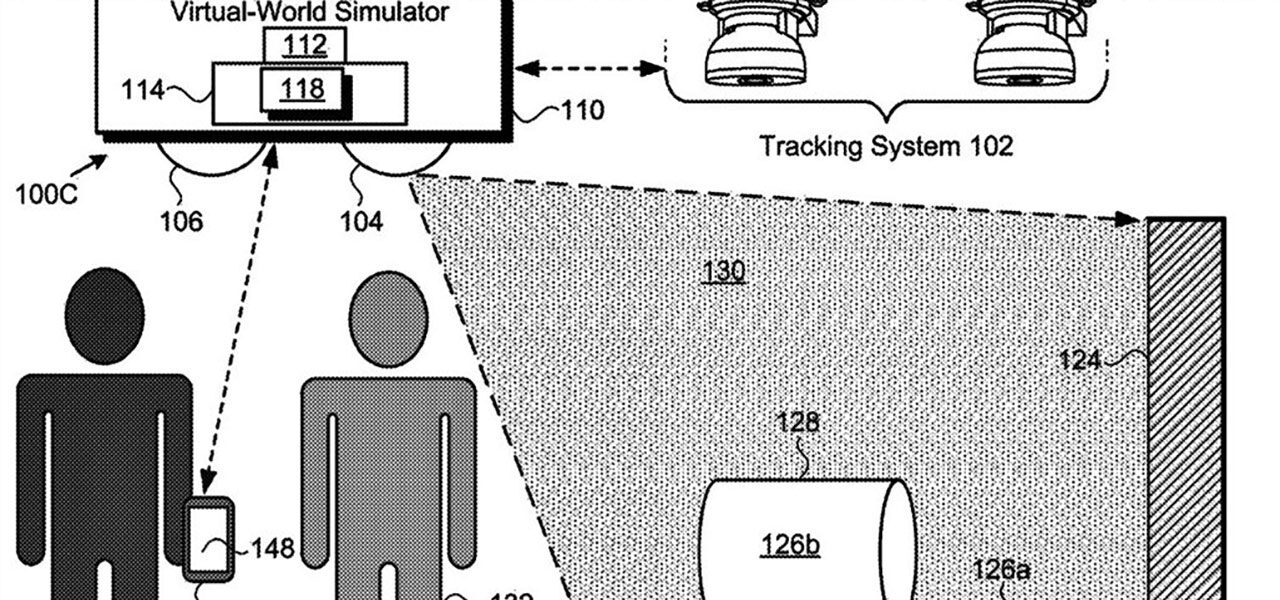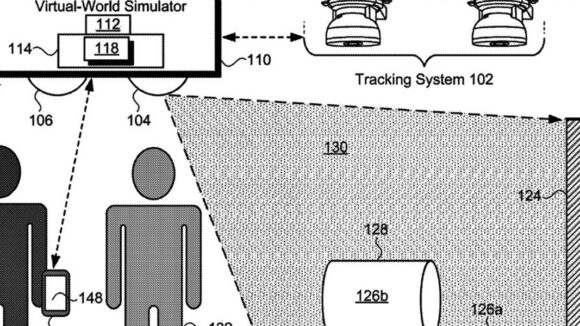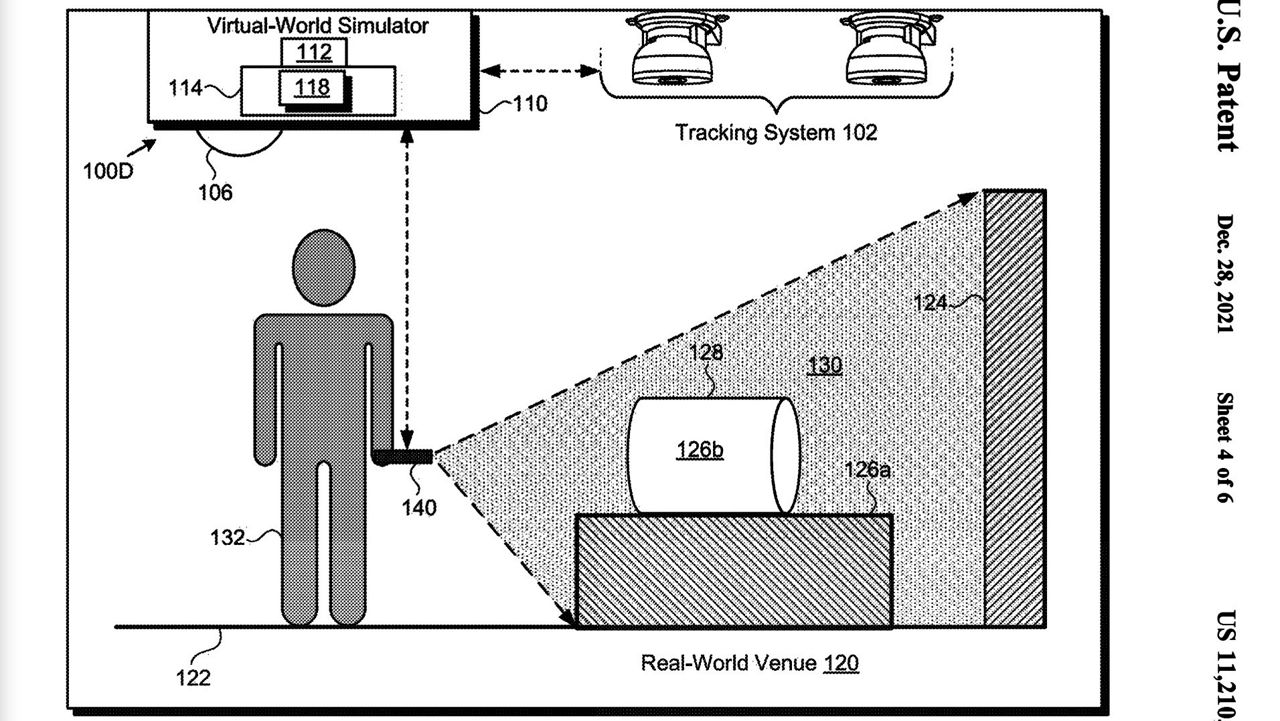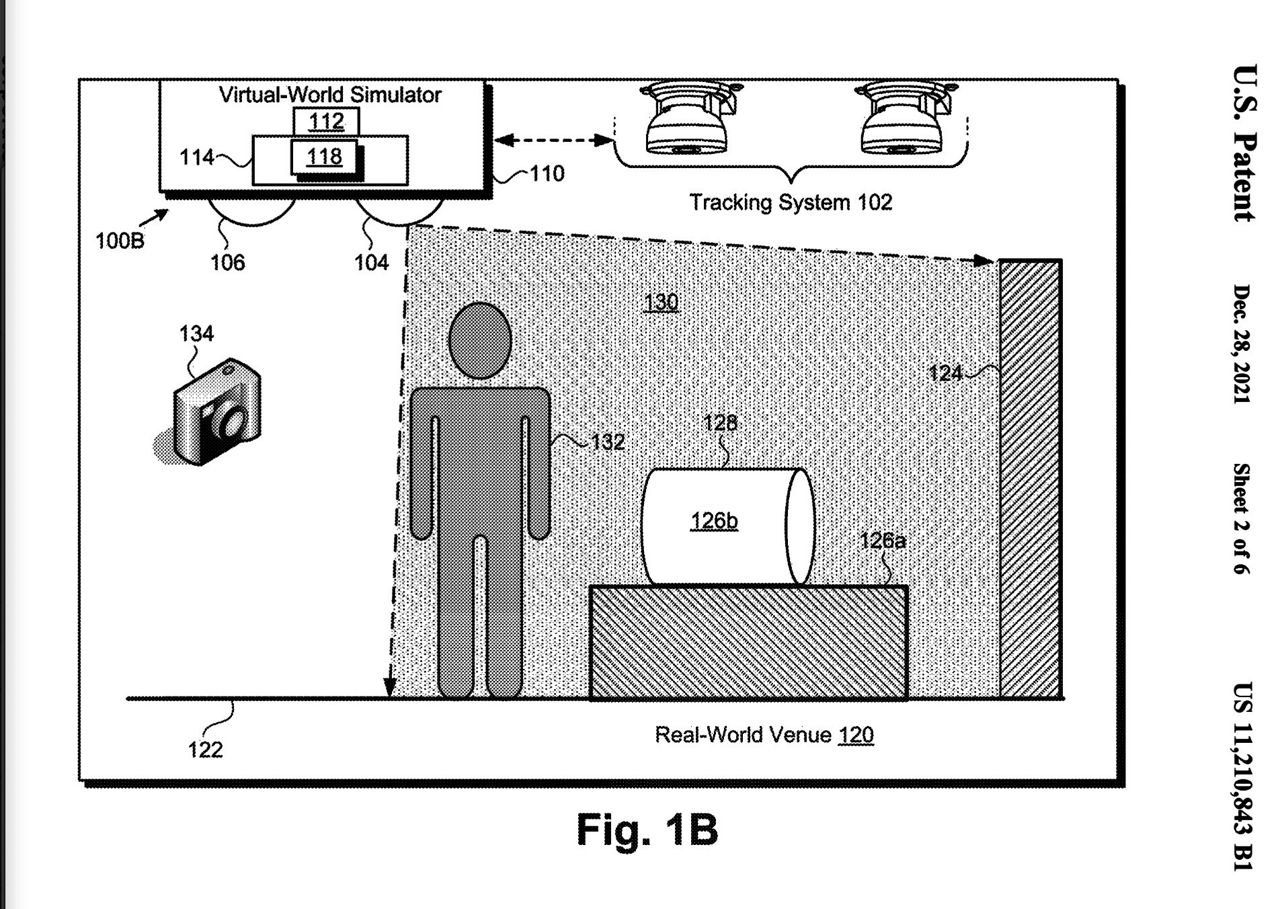

Disney Patents Virtual World Simulator That Doesn’t Require Headsets, Goggles, Or Smartphones
Disney is joining the metaverse party.
We aren’t talking online gigs or business meetings with avatars. Disney wants to enhance the virtual dimension of its theme parks with its Virtual World Simulator, new technology for which it was granted a patent in the U.S. on December 28.
The system could be used as follows: a user enters a venue or ride in which images are projected onto flat and curved surfaces, creating an immersive virtual environment. The user’s movements are tracked and the projections change accordingly, maintaining the sense of a complex, coherent world. Their shifting viewpoint is gauged with a technique called Simultaneous Localization and Mapping, or SLAM.
Those projections could be animated characters, props, or backgrounds artwork. Park visitors may end up interacting with Mickey Mouse and Elsa as images, not cast members in costume. The tech, which may also include a handheld device, could allow them to engage with the virtual elements by pointing, for example.


The Virtual World Simulator differs from both virtual reality (vr), which encloses the user in a virtual world via a headset, and augment reality (ar), which lets users overlay virtual elements onto their environment via a device such as goggles or a smartphone. Disney’s new platform doesn’t require the user to wear anything.
“Ar glasses, goggles, and headsets can be costly and inconvenient to wear,” notes the patent. It adds that “the increased concern over the spread of communicable disease” makes the sharing of devices more burdensome: they would have to be cleaned. Finally, “requiring the use of an ar enabled personal device to enjoy a virtual environment effectively precludes multiple users from sharing the same experience.”
The patent notes that the venue doesn’t have to be a theme-park attraction: it can also be a “personal residence,” “game environment,” or “film or broadcast studio.”
This kind of experimentation is far from new at Disney, whose history is studded with technical innovations in animation production but also experiential entertainment. This is a company that has used projection mapping in Disneyland fireworks shows, and partnered, via subsidiary Lucasfilm, with Meta’s Oculus on vr experiences like Star Wars: Tales from the Galaxy’s Edge.
Disney executives have been touting their metaverse ambitions for some time. In November 2020, Tilak Mandadi, then head of digital and technology for Disney Parks, Experiences and Products, wrote in a Linkedin post:
As we look to the future, connected park experiences that transcend the physical and digital barrier and unlock new layers of storytelling are a very exciting focus of ours. I call this concept the “theme park metaverse” — this is where physical and digital worlds converge, with wearables, smartphones, and digital access points immersing the guests in the metaverse experiences. These experiences are perennial, and the guest engagement is inside and outside the parks. They are unique to you, but are also social and connected. They are constantly changing so there is always something new to discover.
In November 2021, CEO Bob Chapek reaffirmed the sentiment during an earnings call, promising “a time when [the company will] be able to connect the physical and digital worlds even more closely, allowing for storytelling without boundaries in our own Disney metaverse.” He told CNBC the metaverse would have something to do with Disney+.
As with much in the metaverse, Disney’s plans here remain vague on the whole. But the patent reveals one prong of its strategy in this buzziest of areas. The most famous producer of linear animation is getting serious about experiential animation.

.png)